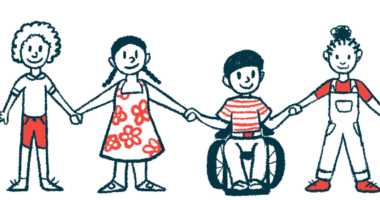Orkambi Found to Improve Exercise Endurance in 3 CF Adults in Study
Treatment for 6 months also eased shortness of breath, leg discomfort

Treatment with Orkambi (lumacaftor/ivacaftor) for six months was found to improve exercise endurance in three adults with cystic fibrosis (CF), a new study showed.
Moreover, by the end of the study, all three men experienced less leg discomfort and less dyspnea, or shortness of breath.
For two patients, oxygen uptake measured during physical exercise increased — “an important result as [peak oxygen consumption] is an excellent general predictor of survival in CF,” the researchers wrote.
“Improving [shortness of breath] and exercise tolerance are recognised as important goals in the treatment of CF, with the measurement of exercise endurance also considered a valuable component of CF assessment, particularly in response to treatment interventions with new drugs as modulators,” the team wrote.
However, given that this was a case series with no control group, the researchers noted that only “interesting observations” could be made.
Investigating Orkambi for exercise endurance
The study, “Changes in exercise endurance and inspiratory capacity after lumacaftor/ivacaftor therapy in cystic fibrosis,” was published as a letter to the editor in the journal Pulmonology.
CF is caused by mutations in the CFTR gene, which results in the production of a faulty CFTR protein. This protein is important for regulating the flow of chloride ions and water through the membrane of certain cells. A dysfunctional CFTR protein, or too little CFTR, leads to the production of abnormally thick mucus — a hallmark of CF.
There are different types of CFTR mutations, but the most common is F508del. Vertex Pharmaceuticals’ Orkambi is an approved therapy for people with CF who have two copies of the F508del mutation.
According to researchers, improving dyspnea and exercise tolerance is important in the treatment of CF. Physical exercise is part of the treatment for CF patients. Doctors also measure exercise endurance when aiming to assess how well a specific treatment works.
A previous study found that one month of treatment with Orkambi failed to increase exercise endurance or ease dyspnea in adults with CF. However, the long-term impact of the therapy on these endpoints remains unknown.
Now, a team of researchers in Italy reported the exercise endurance time of three men with CF after six months of treatment with Orkambi, when given at a dose of 400 mg/250 mg, every 12 hours. All three patients had F508del mutations in both CFTR gene copies, and none had received Orkambi before the study.
Before the start of treatment and again six months after, patients underwent cardiopulmonary exercise testing (CPET) — a method used to evaluate heart and lung function at rest and during exercise. The test was conducted using a stationary exercise bike.
Researchers also assessed inspiratory capacity — the volume of air that can be inhaled following expiration — and exertion, using the Borg rating. That rating indicates how hard the activity is for the individual based on heart and breathing rate, degree of perspiration, and muscle pain.
After six months of treatment, exercise endurance time increased for all three patients — by 87%, 52%, and 23% among the men.
Inspiratory capacity also improved for all three, and oxygen uptake increased in two patients, the researchers noted. Additionally, all patients reported less breathing discomfort and leg fatigue.
“In this case series we found evidence that [Orkambi] can increase inspiratory capacity, reduce exertional breathlessness and improve [exercise endurance time] in patients with CF,” the team wrote. “In addition to changes in [dyspnea], our patients who showed an increase in endurance time also experienced less leg discomfort.”








